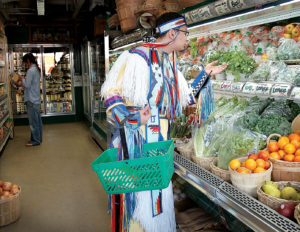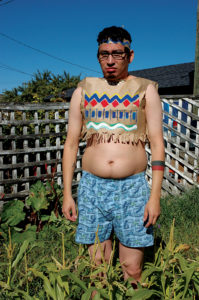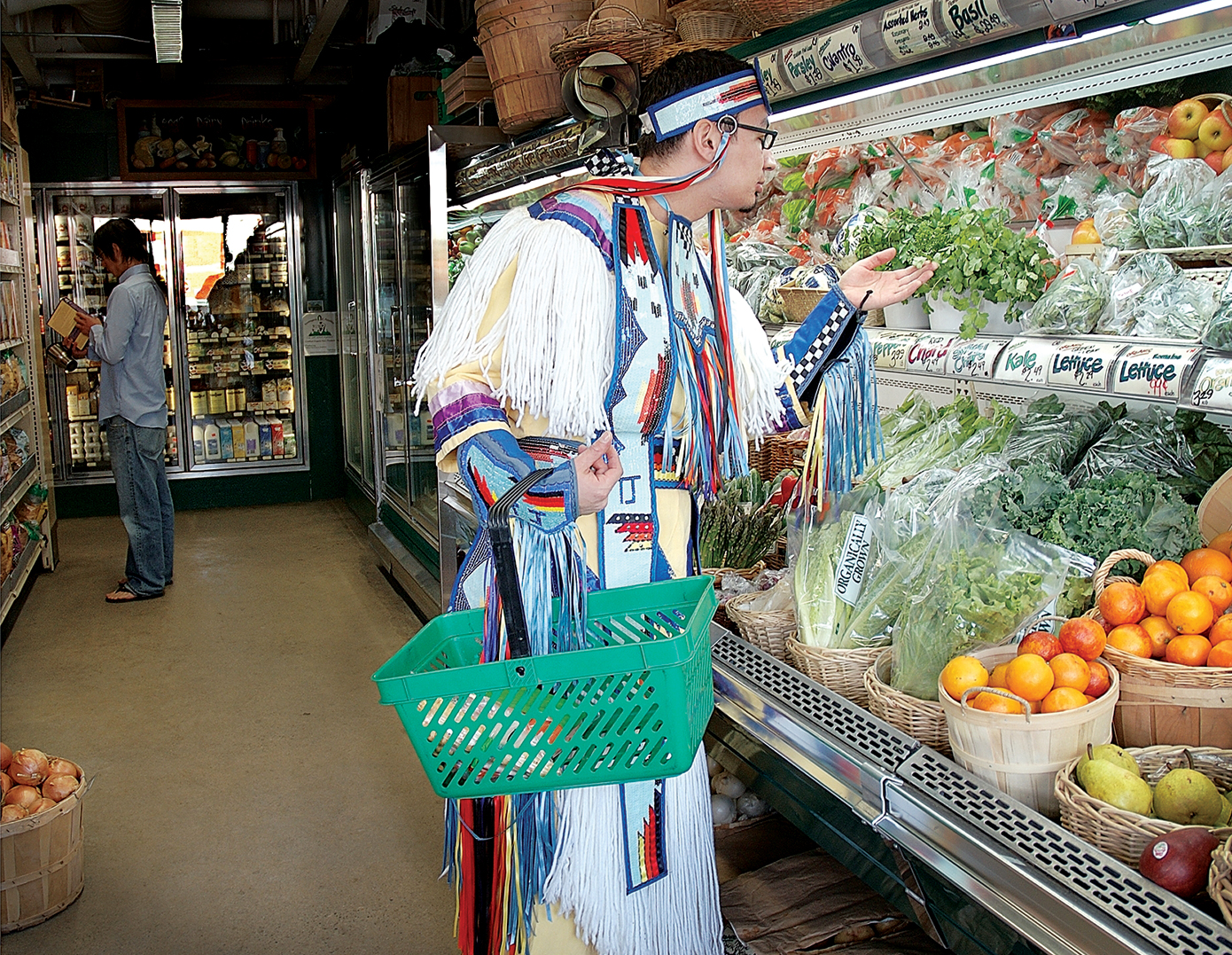
Karolina Wisniewski
Contributor
While many artists shy away from works tackling First Nations subject matter for fear of controversy or inaccessibility, Terrance Houle’s new exhibition “GIVN’R” features a body of work that earnestly explores Aboriginal culture and is still able to poke some fun at itself.
Showing this season at the Art Gallery of York University (AGYU), “GIVN’R” pulls off a feat few exhibitions can: it humanizes its subject matter while still placing it on a historical continuum, all the while celebrating an immensely creative period in Houle’s career.
Particularly impressive is how multidisciplinary “GIVN’R” is. The exhibition’s mediums of installation – performance, video and photography – successfully come together and function as a coherent whole.
“I have a degree in fibre and textiles from the Alberta College of Art and Design in Calgary,” said Houle of the origins of his aesthetic, “and when I was there it was really open-ended [in doing] whatever you wanted. You learned a lot of techniques in fibre arts […] so that’s where I learned a lot of interdisciplinary stuff.”
The emotional spectrum of the work ranges from light-hearted, as in Pitchin’ Tipis, to nostalgic, as in untitled 2009.

Pitchin’ Tipis, a photographic series of Aboriginal men with erections under their loincloths, is meant to explore “the identity of the Aboriginal male and how it has changed through ideas of homophobia, alienation and separation,” Houle noted.
While seeming blithe, this tongue-in-cheek piece probes at some difficult questions. What makes Houle’s work so refreshing is its lack of pretentiousness, achieved precisely through humorous or personal imagery that makes for easily digestible social and political commentary.
One of the exhibition’s more touching pieces is untitled 2009, an installation piece consisting of a recreated sitting area, complete with a radio from which an audio recording plays.
Houle spoke about the story behind this piece: “There was a policy enacted by the Canadian government to take children from their families and send them to residential schools. [Three generations of my family] were in residential schools […] When my grandmother passed away, my father came back from the funeral and had found a box she kept of every letter he wrote to her when he was in residential school. So in this piece, I recreated her sitting area and had my father read the letters he sent her.”
But it’s in its earnestness and accessibility that the genius of “GIVN’R” lies. In the wrong hands, the subject matter tackled by Houle could be uninviting and obscure. Through the use of irony and subversion of typical conceptions of Aboriginality, however, Houle renders the abstract ideas he explores accessible and intelligible to virtually anyone.
“I learned how to be humorous about it,” Houle said, referring to the racial prejudices he often encountered, “not to point fingers and be angry about things. My parents would say, ‘These people don’t know, so you should tell them,’ so this is my way of letting people come into this realm of humour. To see this chubby Indian running through a field, not wearing pow-wow regalia the way it’s meant to be worn […] there’s a reality in that.”
“I think he successfully communicated what he set out to do and gave a perspective on the rights and history of Aboriginal people to a community that may not be familiar with it,” said fourth-year fine arts student Kathryn Liedeman after viewing the exhibition.
“[GIVN’R] has given me a new perspective on art that deals with Aboriginal subject matter,” she added. “It has put it in a historical context and also in relevance to the audience viewing it.”
Free from the pretentiousness and empty rhetoric that clutters so much of contemporary art, Houle’s work in “GIVN’R” is a breath of much needed (and much appreciated) fresh air.
“GIVN’R” is on display at the AGYU until Dec. 5.


